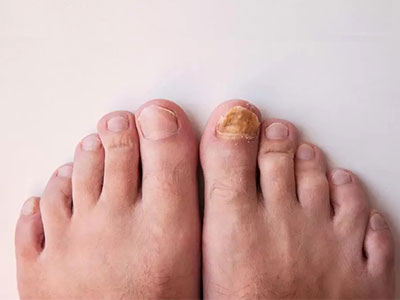
How does toenail fungus occur?
Toenail fungus, also known as onychomycosis, is a common fungal infection that affects the nails of the toes. This condition can be unsightly and uncomfortable, causing the nails to become thick, discolored, and brittle. While toenail fungus is generally not a serious health concern, it can be difficult to treat.
Toenail fungus occurs when fungal organisms, such as dermatophytes or yeasts, invade the nail bed and surrounding tissues. These fungi thrive in warm, moist environments, making the toes an ideal location for their growth. The condition is most commonly caused by a type of fungus called Trichophyton rubrum, which can also cause athlete’s foot. Some factors that can increase the risk of developing toenail fungus include:
- Poor hygiene: Not keeping the feet clean and dry can increase the risk of fungal infections.
- Trauma: Any injury to the nail bed can provide an entry point for fungi to infect the toenail.
- Reduced circulation: Conditions that cause poor circulation, such as diabetes or peripheral artery disease, can make it harder for the body to fight off infections.
- Weakened immune system: A weakened immune system can make a person more susceptible to fungal infections.
- Age: As we age, our nails can become more brittle and susceptible to fungal infections.
- Genetics: Some people may have a genetic predisposition to toenail fungus.
Toenail fungus typically begins as a small white or yellow spot under the nail. As the infection progresses, the nail may become thicker, discolored, and brittle, and may even separate from the nail bed. The condition is not usually painful unless it becomes severe, but it can be unsightly and embarrassing.
Treatment for toenail fungus may involve antifungal medications, either topical or oral, laser treatment as well as keeping the affected area clean and dry. In some cases, surgical removal of the nail may be necessary. Preventing toenail fungus involves taking steps to avoid the risk factors that can lead to its development. This includes keeping the feet clean and dry, wearing shoes that fit properly and are breathable, avoiding walking barefoot in public places like locker rooms and pools, and not sharing personal items like shoes, socks, or nail clippers.
